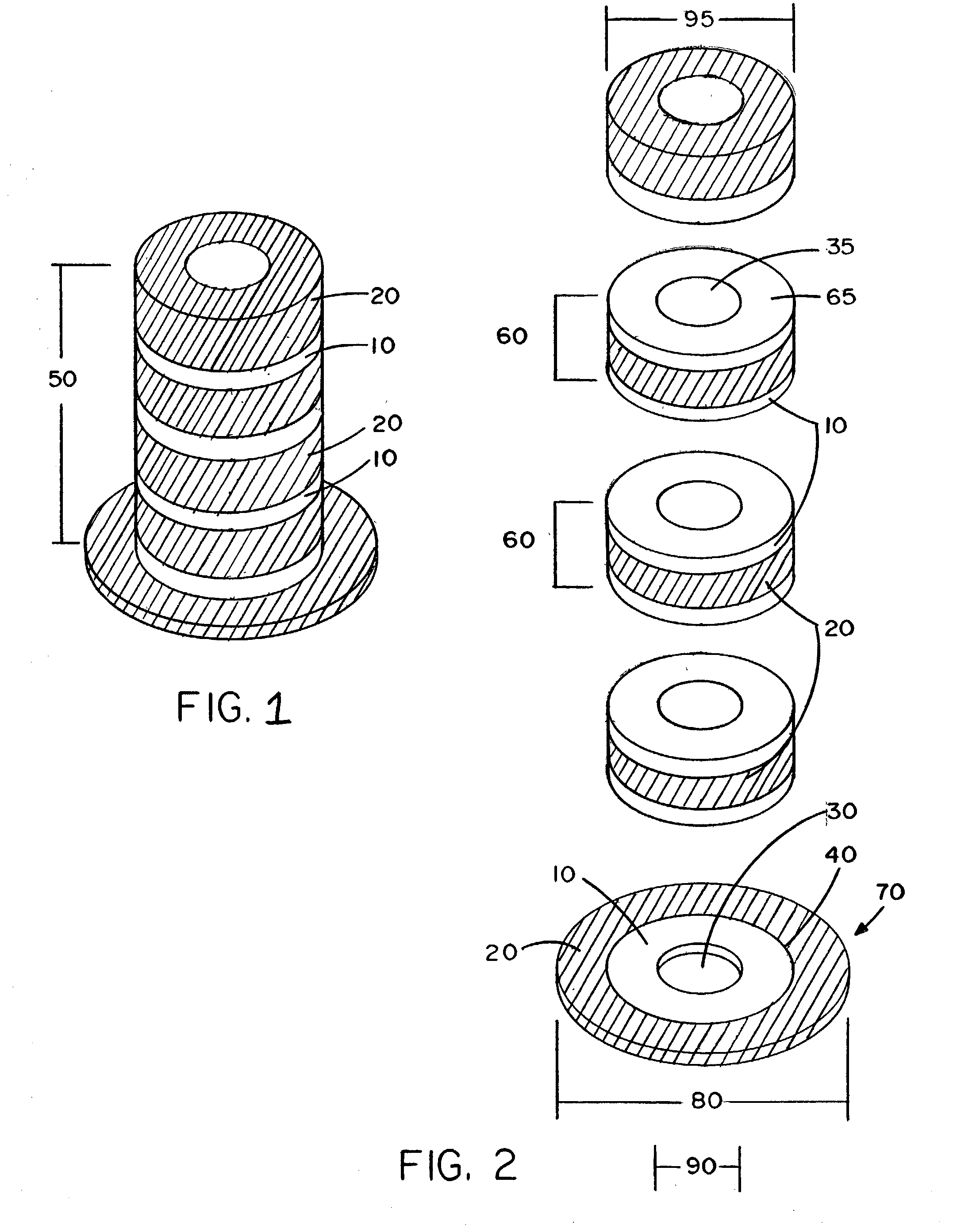Method of manufacturing a PTFE preform using thermal fusion
a technology of thermal fusion and manufacturing method, which is applied in the direction of mechanical equipment, transportation and packaging, and other domestic objects, can solve the problems of large presses, large press sizes, and high production costs
- Summary
- Abstract
- Description
- Claims
- Application Information
AI Technical Summary
Benefits of technology
Problems solved by technology
Method used
Image
Examples
example 1
[0037] Sintering of a tube with a 3.25 inch wall thickness:
1 Time (hours) Sintering step Temperature (.degree. F.) 14 heat to 500 5 hold at 500 6 heat to 685 24 hold at 685 8 cool to 500 5 hold at 500 12 cool to 150
[0038] Example 2: Sintering of a tube with a 2.75 inch wall thickness
2 Time (hours) Sintering step Temperature (.degree. F.) 12 heat to 500 4 hold at 500 4 heat to 685 16 hold at 685 8 cool to 500 2 hold at 500 4 cool to 150
[0039] Example 3: Sintering of a tube with a 2.0 inch wall thickness
3 Time (hours) Sintering step Temperature (.degree. F.) 10 heat to 550 4 hold at 550 4 heat to 685 14 hold at 685 6 cool to 500 2 hold at 500 4 cool to 150
PUM
| Property | Measurement | Unit |
|---|---|---|
| pressure | aaaaa | aaaaa |
| pressure | aaaaa | aaaaa |
| pressure | aaaaa | aaaaa |
Abstract
Description
Claims
Application Information
 Login to View More
Login to View More - R&D
- Intellectual Property
- Life Sciences
- Materials
- Tech Scout
- Unparalleled Data Quality
- Higher Quality Content
- 60% Fewer Hallucinations
Browse by: Latest US Patents, China's latest patents, Technical Efficacy Thesaurus, Application Domain, Technology Topic, Popular Technical Reports.
© 2025 PatSnap. All rights reserved.Legal|Privacy policy|Modern Slavery Act Transparency Statement|Sitemap|About US| Contact US: help@patsnap.com


